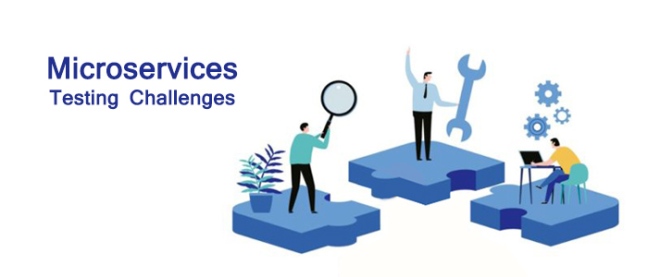Microservices is a successful endeavor aimed at integrating specific features into the software development domain. The benefits of microservices are wide and all types of businesses can benefit from them. Some well-known advantages include scalability, flexibility and deployment.
While microservices have many advantages, there are some challenges that the company must be prepared for when testing and implementing microservices. This blog will discuss some of these challenges and possible solutions to these challenges.
Phases
Suitable testing for microservices is best obtained from Mike Cohen’s test pyramid, which includes unit testing, contrast testing, integrating testing, and E2E testing. These four phases involve a number of tests in increasing order from unit testing having the highest number of tests preferably automated and E2E having the least numbers of tests; the time required to complete these phases depends on the number of tests.
The scope of the test also needs to follow the same pattern. The E2E testing should have a minimum scope. The last phase should typically be limited to checking the working of all services together. Employing a third-party testing company would save your internal teams the hassles. Try to hire an offshore Software testing company to reap maximum benefits at competitive prices.
Challenges and Solutions
Unlike testing in other areas, microservices require specific concerns. Each stage of testing might require a different strategy and one strategy would not work perfectly in every setting. Listed below are some challenges and solutions in microservices testing.
Versatility
Though this looks like a benefit, it is more of a challenge because microservices are like small segments and companies deploy teams to take care of each segment. Now, the right type of testing would involve holistic and individual unit testing which becomes a challenge. Therefore, to take care of such a situation, the best approach is to streamline testing and decide which phase will have which kinds of test. For example, integration testing can be left for the last phase.
Interoperability
This is another benefit and software testing challenge. All microservices are required to work in tandem with each other to create highly flexible Software. But, at the same time testing each of these individual features for working well with each other cannot be left till the last stage because rework would cost a lot to the organisation. The solution is to keep cross checking with vital features as and when working so that last moment glitches can be avoided.
Compatibility
Microservices are required to function in tandem with each other. They are sometimes required to be exposed to external APIs and these might cause issues in functioning at a later stage. This requires extensive testing because the behaviour can be unexpected. The best solution in this case is to test all exposures in the intermediate phase, ensuring consistency with external sources.
The challenges discussed above can come together or appear as a glimpse. If your internal team is not confident then you can partner with offshore Software testing service providers at a nominal price. Looking at what microservices bring to the table, it is worth every effort put in testing and maintaining these strategies. The success derived from microservices is guaranteed if you have opted for an effective testing strategy that is versatile and robust.

